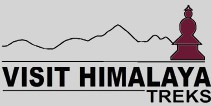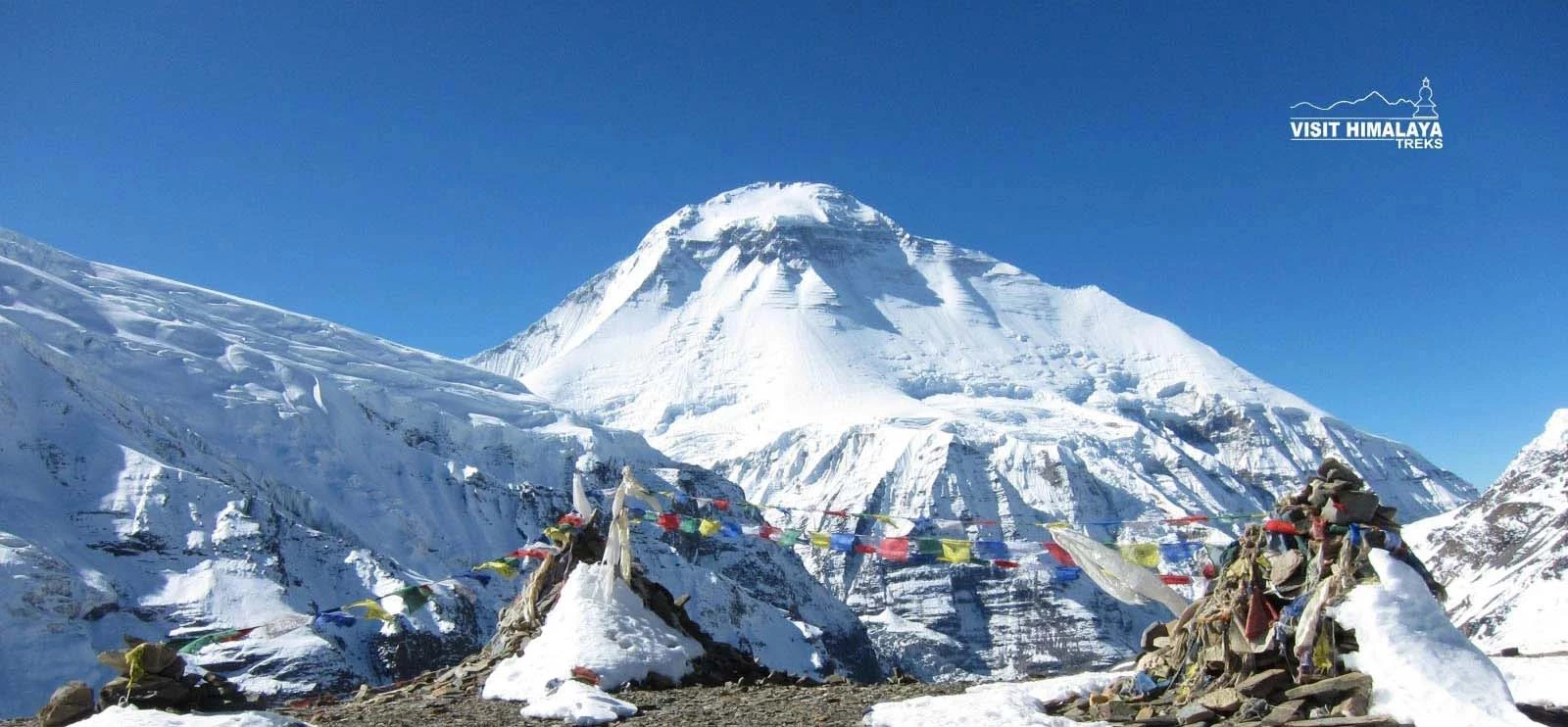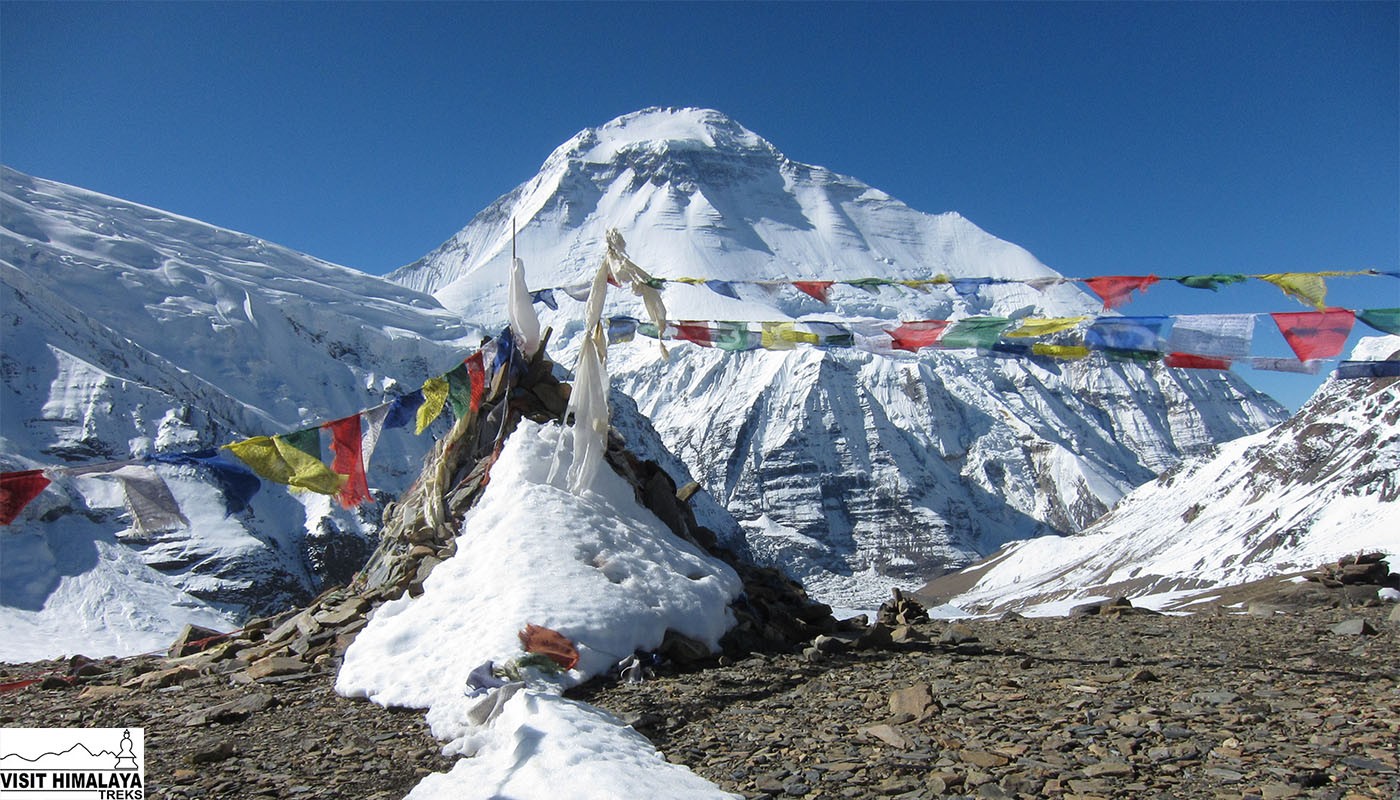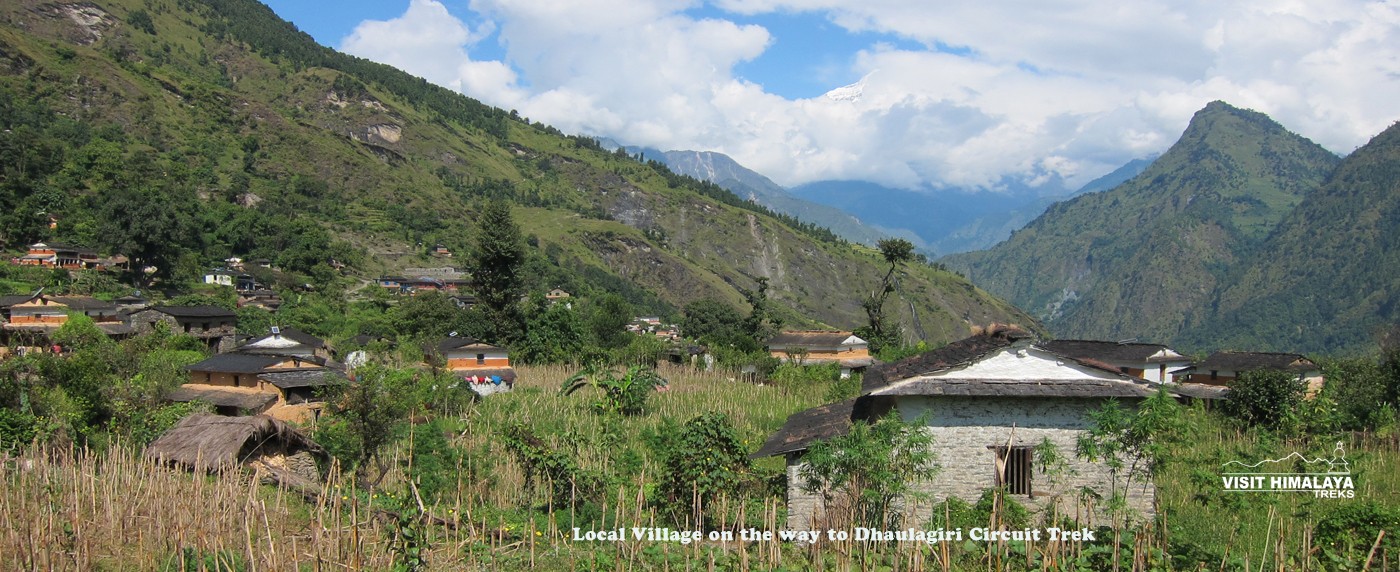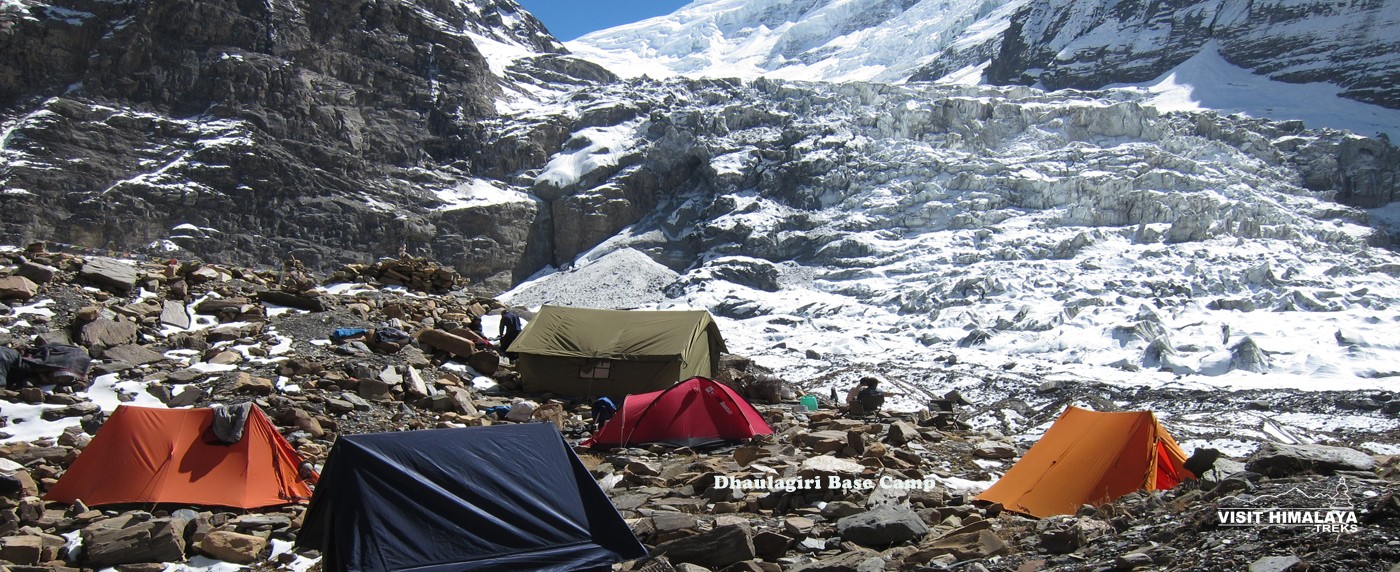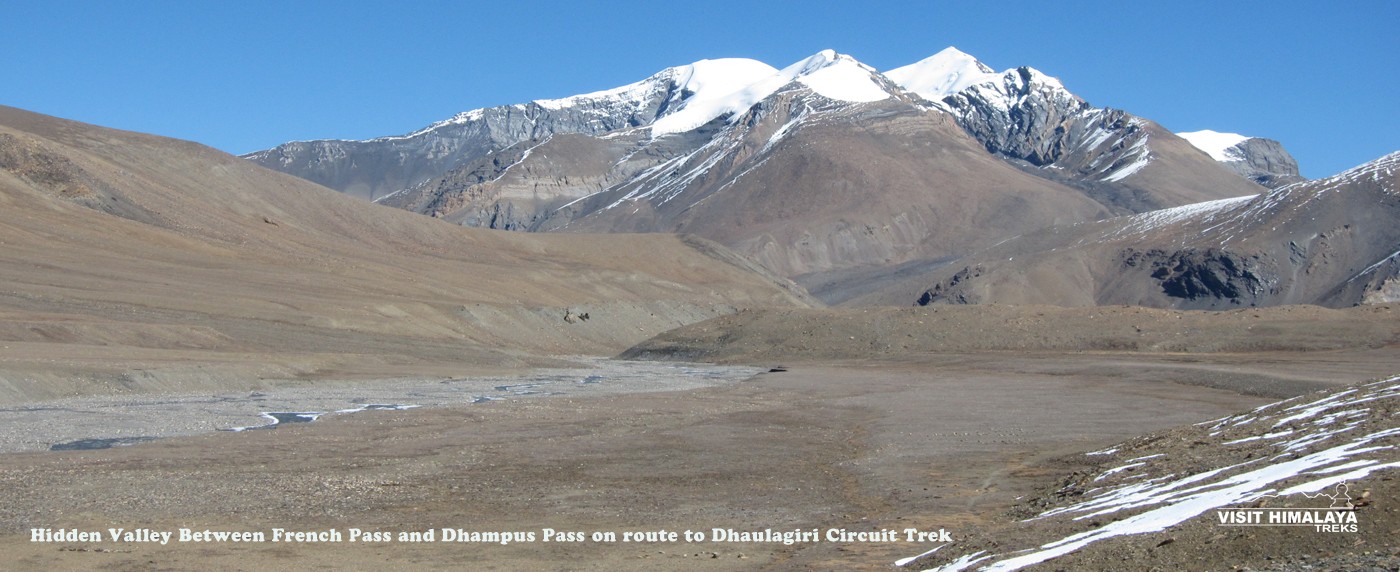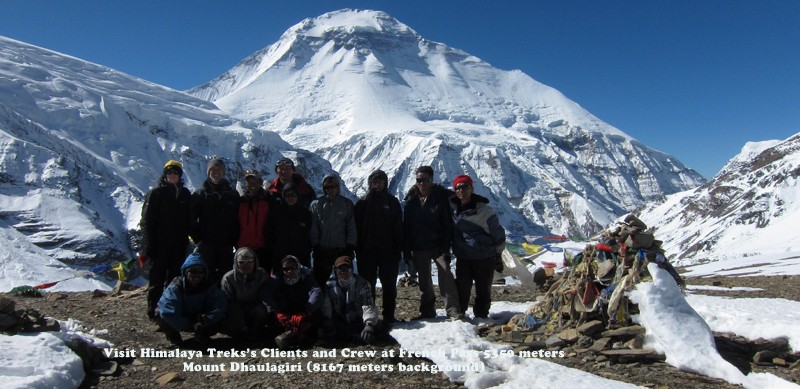Dhaulagiri Circuit Trek is demanding trekking to the seventh highest peak mount Dhaulagiri Base Camp (4748 meters) that also includes crossing of two high passes, French Pass (5350 meters) and Dhampus Pass (5244 meters) Dhaulagiri Base Camp "off the beaten path" trek is a perfect match for the trekkers who have been in the Himalayas of Nepal before and wants more high altitudes and wilderness treks in Nepal.
The seventh highest mountain in the world mount Dhaulagiri is 8167 meters above sea level, one of the remote and high altitude treks leads us to the Base Camp of Mount Dhaulagiri 4748 meters, Trek over the French Pass (5350 meters) and Dhampus Pass (5244) via Hidden valley is one of the most rewarding and challenging treks in Nepal. Mountain Dhaulagiri extends 120 KM from the Kaligandaki River west to the Beri River. Mount Dhaulagiri Massif is bounded north and southwest by a tributary of the Bheri River and on the southeast by Myagdi Khola. Mount Dhaulagiri's first successful climb was on May 13 1960 by a Swiss/ Austrian/Nepali expedition.
Dhaulagiri Circuit Trek mixes trekking through populated lower elevations and higher and wilder valleys to almost perfection. There are bits of trek below 1000 meters with terraced villages rich in social and cultural aspects and hidden valleys with no settlements (all above 4500 meters). Dhaulagiri Base Camp and various angled views of the mountain itself are highlights of Dhaulagiri Circuit Trek.
A demanding terrain, an average altitude of above 5000 meters (for a few days), and two passes, French Pass (5360 meters) and Dhampus Pass (5244 meters) will test the endurance of every trekker. All this will also lead to some breathtaking landscapes and views of the snowy mountains of the Himalayas. Dhaulagiri Circuit Trek concludes in one of the most interesting valleys of the country, Kali Gandaki Valley. This new valley also offers new mountain vistas of Annapurna Massif, Nilgiri Range, and Tilicho (7134 meters), providing an equally dramatic end to one of the amazing treks that the Himalayas of Nepal has to offer.
